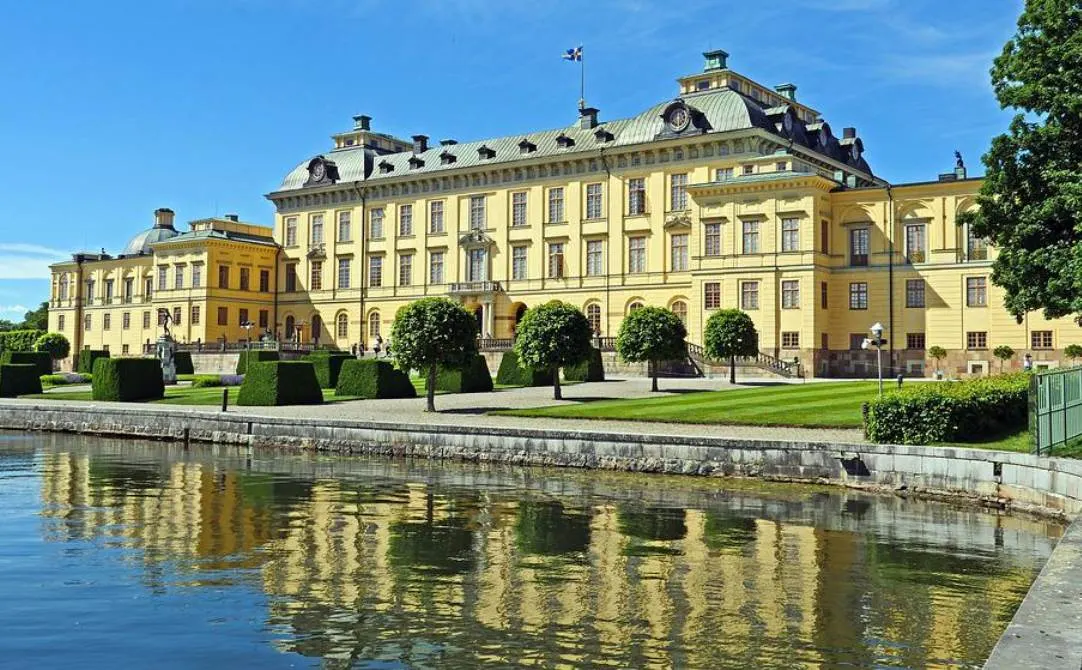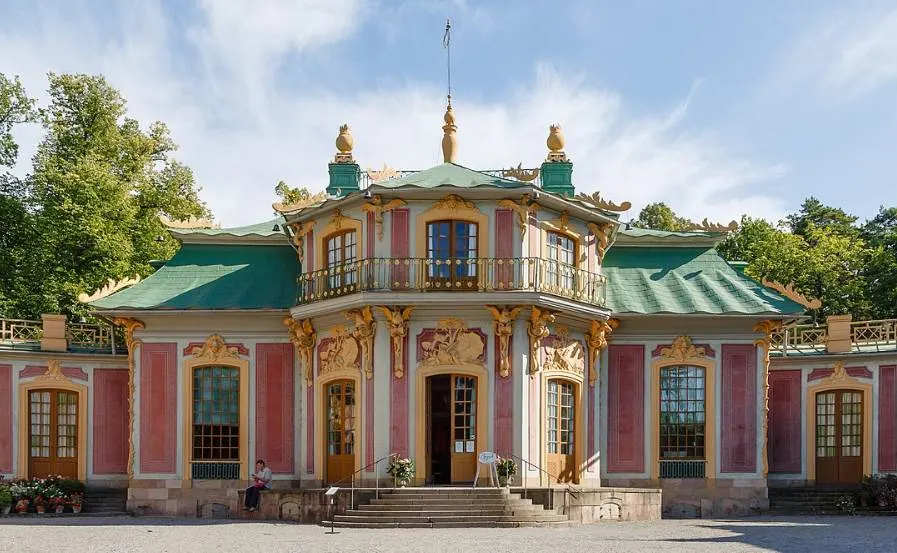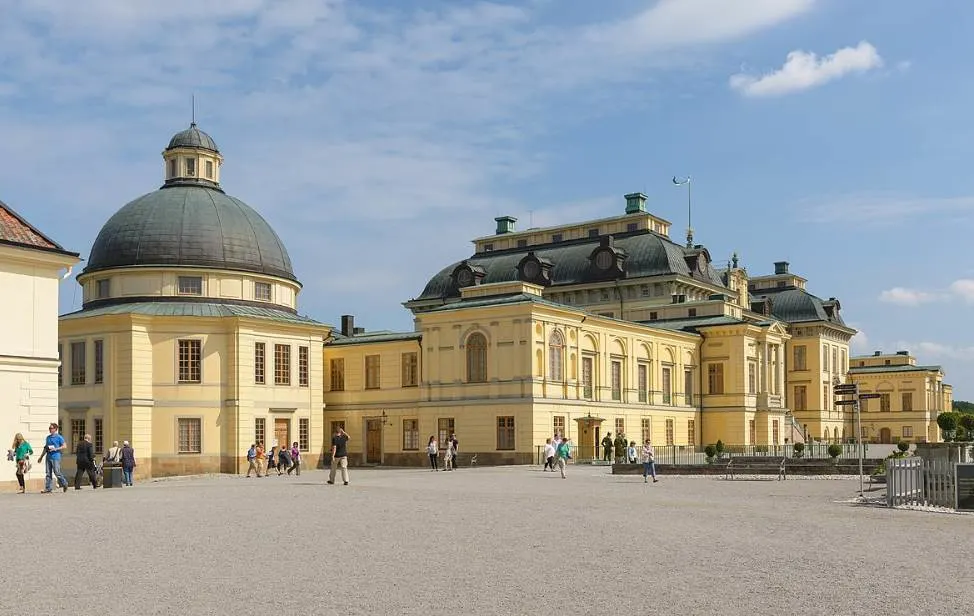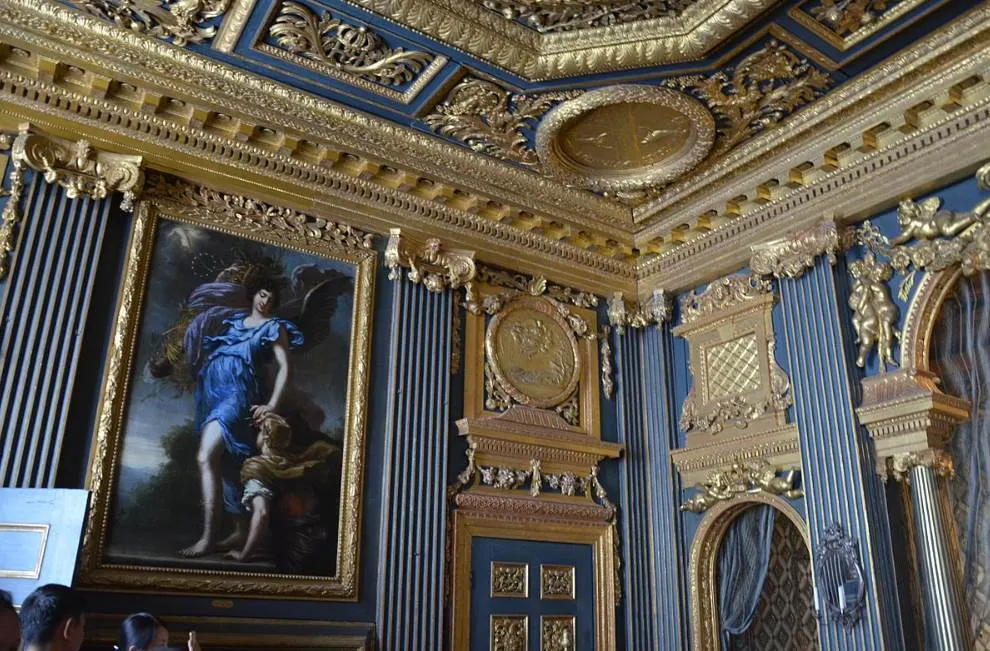There are picture-perfect palaces all around the world, and this one in Sweden can hold a candle to the most mesmerizing structures on the planet.
The location of the palace and its amazing architecture and garden design have turned it into a popular spot to visit near the country’s capital.
IN this article, you’ll discover some of the most interesting facts about Drottningholm Palace, a remarkable building for several reasons.
1. The palace is located on an island just west of Stockholm
Stockholm is the largest city and Sweden and is located on the so-called Stockholm archipelago. This island group in the southeast of Sweden consists of approximately 24,000 islands.
Drottningholm Palace was constructed on one of the larger islands called Lovön which is situated in the Malären Lake just west of the city.
Many of these islands are interconnected with bridges so it’s pretty easy to reach the city center of Stockholm from the palace grounds.
It’s hard to imagine a better location for a palace because its main façade borders the nearby lake.

2. The Baroque palace replaced a former Renaissance building
The Baroque building we can admire today wasn’t the first building in this location. It was preceded by a mansion referred to as “Torvesund” and more notably a Renaissance-style building.
This Renaissance building was designed by a Flemish artist named Willem Boy (1520-1592). He designed several palaces in the Stockholm area and it’s assumed that the former palace at Drottningholm resembled Gävle Palace.

This building burned down just a few months after Queen of Sweden Hedwig Eleonora (1636-1715) had acquired it in the year 1661.
She quickly hired Baroque architect Nicodemus Tessin the Elder who designed the current Baroque palace which was most probably inspired by the Palace of Versailles.

3. Its importance increased significantly in the early 1980s
The palace quickly became the favorite summer residence of the Swedish royal family. It served this purpose during the 17th, 18th, and early 19th centuries.
The interior design was completely transformed into the popular Rococo architectural style in the 18th century. This redesign was commissioned by Louisa Ulrika of Prussia (1720-1782), the wife of King Adolf Frederick of Sweden (1710-1771).
Drottningholm Palace was sold by Louisa Ulrika tot he Swedish state in 1777, an important moment in the palace’s history.
I continued to serve as a summer residence for the royal family until it was abandoned by Charles XIV John of Sweden, a man who reigned in the aftermath of the French Revolution between 1818 and 1844.
The palace was maintained during this period. The current Swedish royal family took great interest in the palace and started using it as their main residence in 1981.
If you see the Swedish Military guarding the west wing of the palace, that’s because this is where the Swedish royal family lives today.

4. The palace is surrounded by both a Baroque and English-style garden
Hedwig Eleonora, the woman who commissioned the construction of the palace in the 17th century, also commissioned the Baroque-style garden.
This garden was established in the late 17th century and is located right next to the palace. It features large avenues lined with trees and fountains.
The English-style garden was commissioned by King Gustav III (1746-1792) in the 18th century and is located north of the Baroque garden.
It features two large ponds, bridges, and immense lawns. This part of the garden is decorated with marble sculptures that were imported from Italy and that are located in remarkable positions.

5. It’s a popular tourist attraction and a UNESCO World Heritage site
The palace and its gardens have been open to the public ever since the early 19th century and continue to be a popular tourist attraction near Stockholm today.
It features several additional notable buildings, including:
- The church was completed in 1746.
- The theater is a building that serves as an opera house that dates back to 1766.
- The Chinese Pavilion was constructed between 1753 and 1769.
The palace, its gardens, and the additional buildings have resulted in Drottningholm Palace being added to the Unesco World Heritage list in 1991.

More interesting facts about Drottningholm Palace
6. Drottingholm translates to “Queen’s Islet.” This is a reference to the Renaissance palace that once occupied this location. It was commissioned by John III of Sweden (1537-1592) in 1580 as a gift for his queen Catherine Jagiellon (1526-1583).
7. The Drottningholm Palace Theater was one of the projects that were completed in the 18th century. It was commissioned by Queen Louisa Ulrika who also commissioned the Rococo interior. It replaced a much humbler structure that burned to the ground in 1762.

8. The Chinese pavilion we can admire today wasn’t the original building in Chinese style. The first pavilion was a wooden structure that was completed in 1753 as a gift for Queen Louis Ulrika. The current stone structure was completed shortly after between 1763 and 1769.

9. The palace has been modified significantly over the centuries by the ruling royal families. Each had their preferences according to the fashion at the time.
All these additions were undone during a 4-year project that was completed in the early 20th century. This means that today, the palace looks exactly as it did upon completion.
10. The palace’s church was designed by the main architect of the palace Nicodemus Tessin the Elder. It wasn’t completed until the year 1746 and is still being used for mass by the local parish.

11. There are several reasons why the palace was added to the UNESCO World Heritage site. The organization describes it as follows:
The Royal Domain of Drottningholm stands on an island in Lake Mälar in a suburb of Stockholm. With its palace, perfectly preserved theater (built in 1766), Chinese pavilion and gardens, it is the finest example of an 18th-century northern European royal residence inspired by the Palace of Versailles.
12. The interior of the palace is a prime example of Rococo architecture, the style that became popular in France in the 18th century. The exuberant and theatrical style dominates the rooms and is quite a sight to behold.

